Occasionally I have devoted a post to a particular mask that I found on EBay™. Today I would like to discuss a handsome Huehue mask that was found there by Helmut Hamm, a mask collector who lives in Berlin, Germany.
Here is the mask.
It has a dramatic hairline.
The paint is worn and cracked. The ear design makes one initially think of Benito Juárez and his relatives. The mask is 7½ inches tall, 7 inches wide, and 4½ inches in depth.
However, the back does not resemble the backs of Benito’s masks. On the other hand, just look at the age of this mask, the extreme staining from use on the back. Spectacular!
Helmut began with several related questions—”I need to see it in person, but from the photos I was wondering if this was carved by Benito Juárez Figueroa? It certainly is very well done. The seller picked it up at a rummage sale in California, so there’s NO history whatsoever. How do you date a mask like this?”
I replied—”The attribution of a carver is not so obvious. I agree with you that we can consider Benito Juárez, but I would add his father and a contemporary of Benito, Manuel Pérez. The oval recessed eyes are unlike any I have ever seen (because oval) and the hairline is unusual and remarkable.” I attached photos of three masks:
2. a Benito Juárez Figueroa mask (in my book pp. 140).
Do you see how different this chin is from the last one? Such stylistic details tend to identify a carver.
This mask is 7 inches tall and 6¼ inches wide.
The carved shelf at chin level on the back of this mask is characteristic of Benito Juárez. I think it is obvious how different this back is from the back of Helmut’s mask.
3. and finally a female mask that I bought later in San Miguel d’Allende because I assumed that it had been carved by either by Benito’s Father or grandfather. Actually it has the recessed eyes of the Pérez mask. Why call this a female; couldn’t it be a male face, someone might ask. The absence of a mustache is suggestive, although male masks without facial hair used to be in fashion in the Sierra de Puebla. More telling is the conventional feminine hairline. The last mask, by Benito Juárez, has a typical male hairline.
This mask is 7 inches tall and 6½ inches wide.
Although this chin is less dramatically carved than the Pérez, it has a similar shape with a subtle spine down the middle.
Another ancient and well worn back.
After we had compared the new mask to these three, we agreed that we were still uncertain. Helmut said—”Comparing images, I see the closest similarity to the old mask, that may have been made by Benito’s father or grandfather [the third mask with the crackled paint]… There are obvious similarities to all three of them, and I don’t see that we will find a definite decision at this point.” But after further pondering, Helmut returned to the puzzle—”Without any provenance, eventually it won’t be possible to establish which member of the Juarez tribe carved this, but at this point, I’m reasonable sure that one of them did.” Indirectly, Helmut was asking whether it was possible to tell the difference between the masks of Benito, his father, and his grand-father.
And indeed this was a question that I had struggled with as I was writing my Sierra de Puebla book, but that had been several years ago; what had I thought? I had formulated a theory, based on the available evidence (which was limited), about how to differentiate the masks of Benito Juárez from those of his father, José Juárez García, and from those of his grandfather, José Juárez. Although my memory of the details was foggy, I saw that I had laid out the evidence in my book, for instance on pages 134-135. Briefly, JJG (Benito’s father) made knobby chins (p. 134),
This female mask was converted to a male mask with two strokes of a brush! However it still has a female hairline. This mask is 7 inches tall and 6½ inches wide. Photo courtesy of Vernon Kostohryz.
JJ (Benito’s grandfather) made less knobby chins, where one is more impressed by lines that angle laterally from the edges of the nose, like the wake behind a boat, to define the territory of the chin(p. 135), and Benito’s chins had yet again another shape. This mask is 6 inches tall and 6 inches wide; it has a male hairline but no facial hair..
These were subtle but real differences. Helmut, I said, I remember the trick, so now I will look at your mask and determine whether Benito’s father or his grandfather was the carver. This photo also courtesy of Vernon Kostohryz.




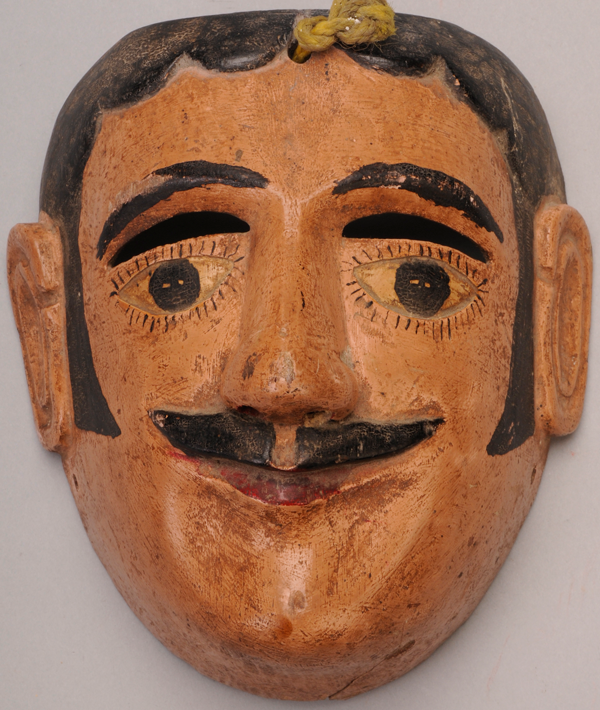
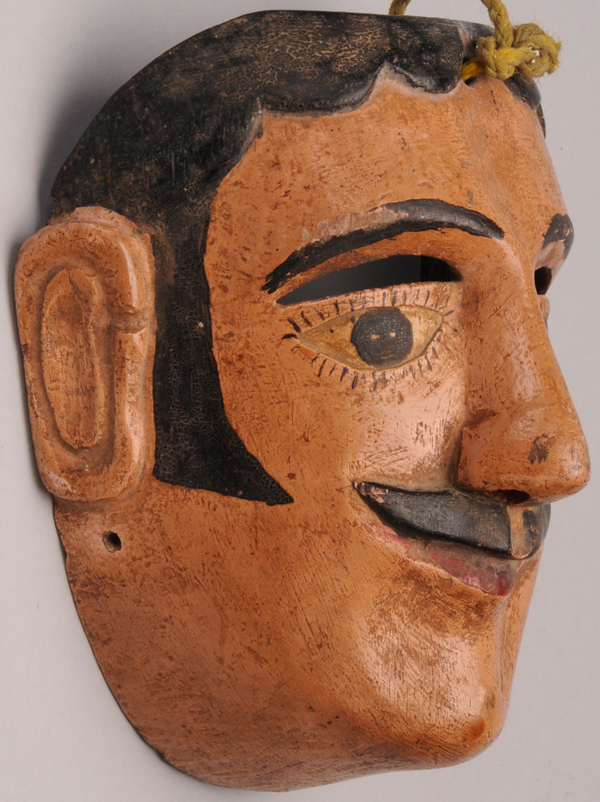
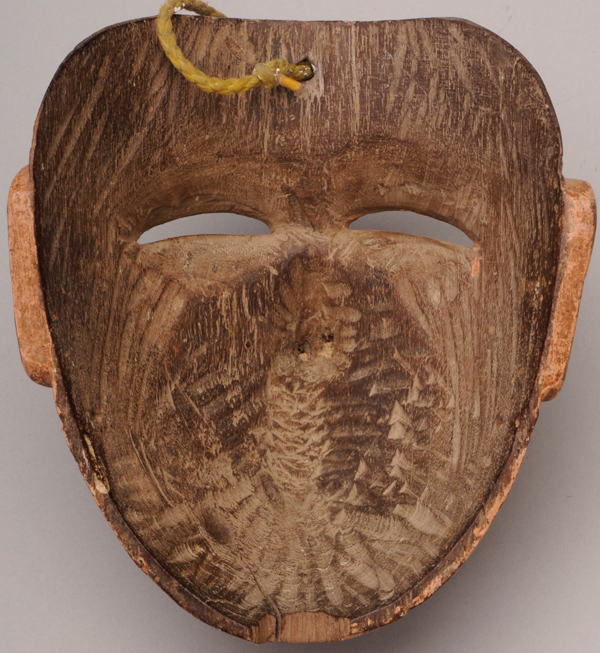
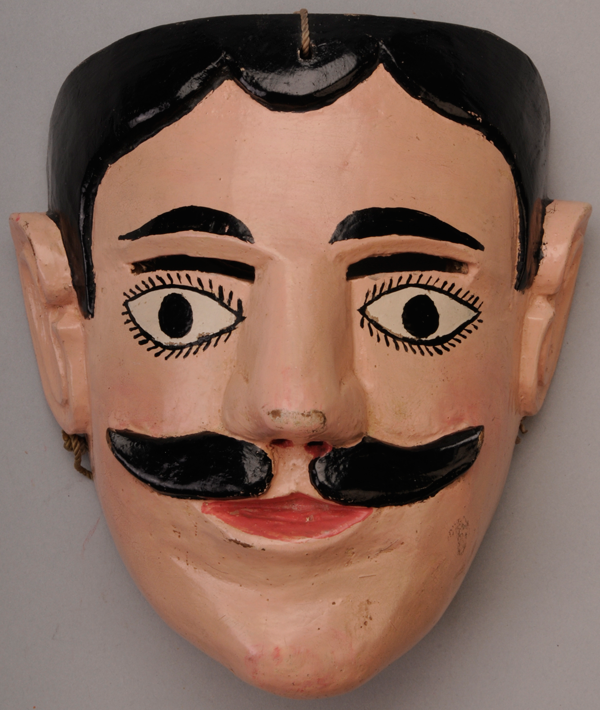

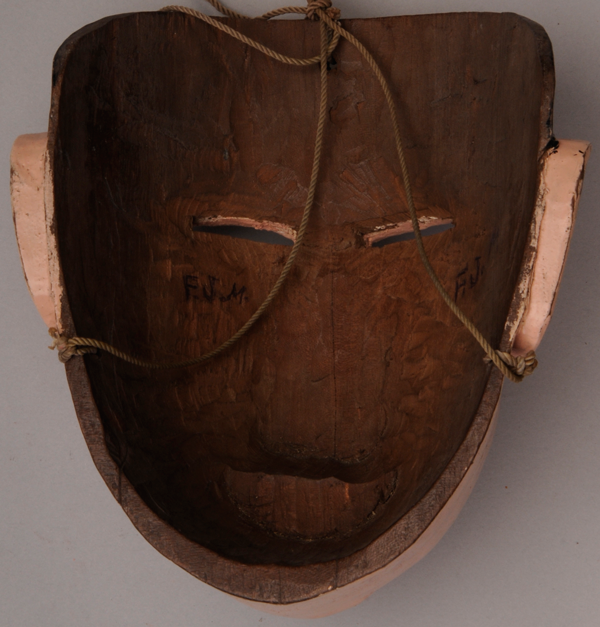
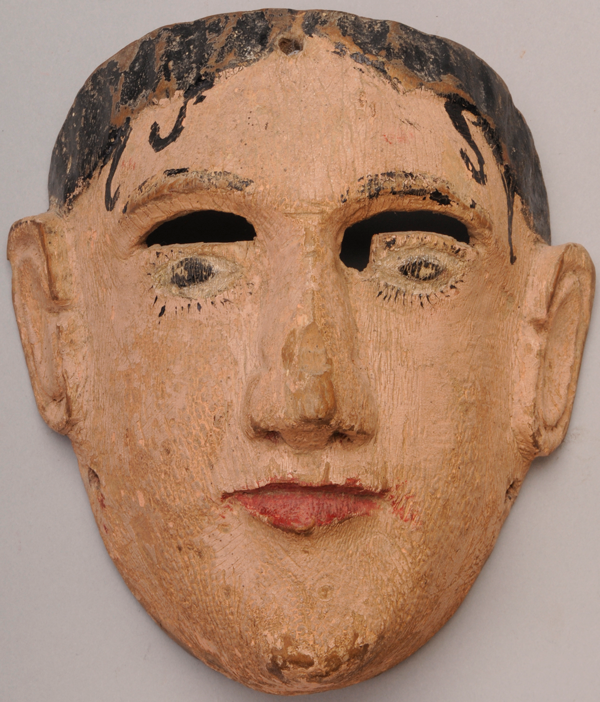
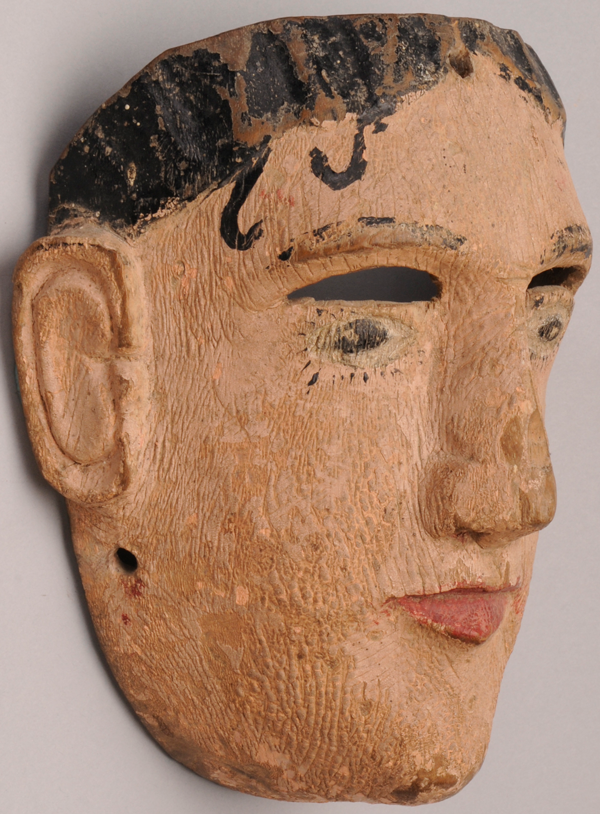
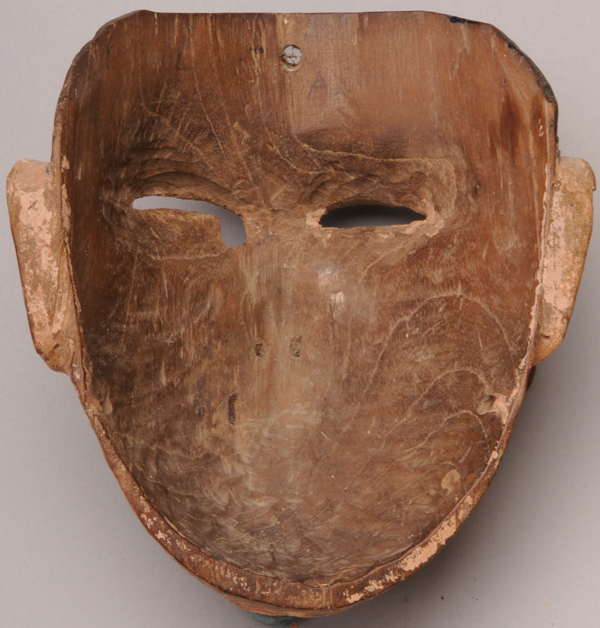



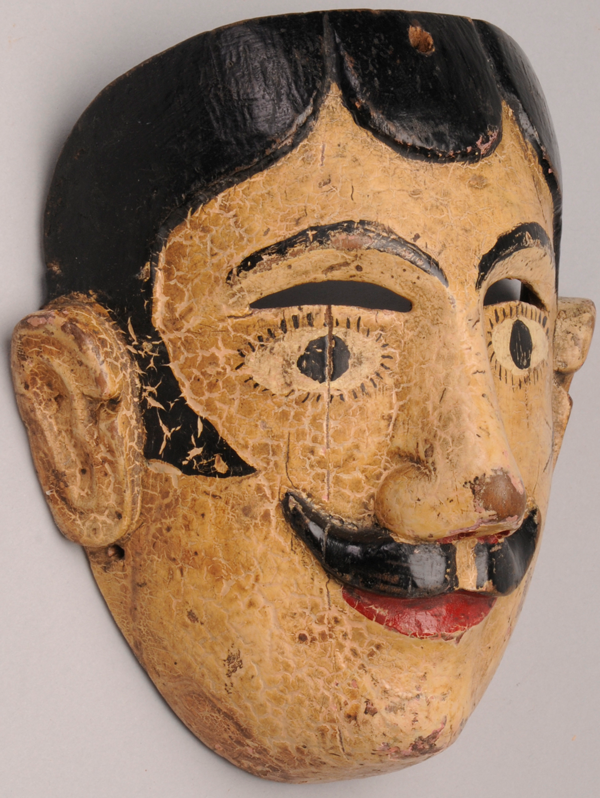

Great old masks and interesting discussion. I like seeing masks of the same type as it illustrates better the carving techniques. Look forward to the next post!
best, john
John
Yes, the variations within a culture area, along with the variations within the work of a single carver, are interesting to study because this level of attention allows one to see beautiful and inventive details.
Bryan
Very nice website. I just met John at a gallery opening in Santa Monica. He gave me your website address to check out. My husband and I have been collecting since the mid ’60’s. We lived in Puebla in 1975-6 and have quite a number of masks from Puebla. We have recently sold 100 masks to James Eddy and Larry Kent but still have approximately 100 masks. We have quite a few of the type discussed above. I would like to send you photos for comparison if you like.
Jane
I am looking forward to seeing your masks.
Bryan